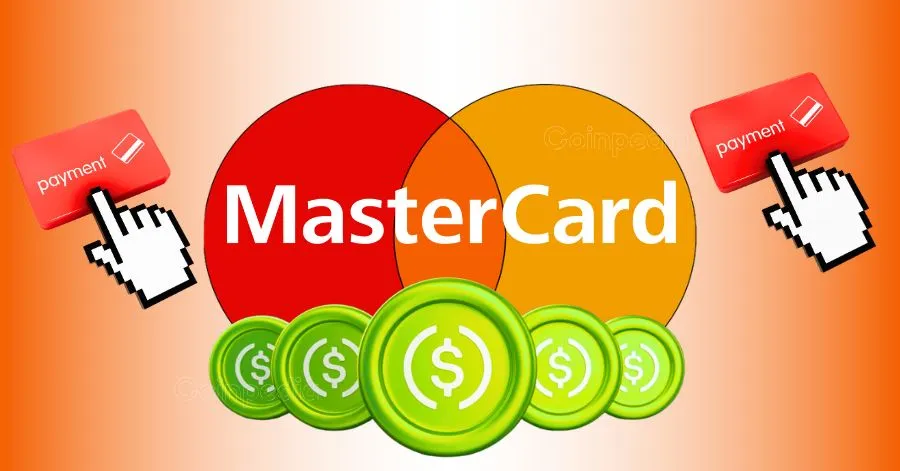The Stablecoin Specter: A Threat to Visa and Mastercard’s Dominance?
Introduction: The Digital Currency Revolution
The financial world is undergoing a seismic shift, with cryptocurrencies and stablecoins emerging as formidable contenders to traditional payment systems. Stablecoins, digital currencies pegged to stable assets like the U.S. dollar, offer a compelling alternative to conventional payment methods. For Visa and Mastercard, the question is no longer whether stablecoins pose a threat, but rather how significant that threat will become. While these payment giants maintain a dismissive public stance, the reality is far more complex.
The Scale of the Challenge: Transaction Volumes and Market Penetration
Visa and Mastercard process trillions of dollars annually, a scale that seems insurmountable compared to the current stablecoin market. However, this perspective overlooks the exponential growth potential of cryptocurrencies. The mobile payment revolution serves as a cautionary tale; what began as a niche technology quickly became a mainstream phenomenon. Stablecoins, with their promise of lower fees and faster transactions, could replicate this trajectory.
The stablecoin market is still in its infancy, but its growth has been nothing short of meteoric. In 2020, the total market capitalization of stablecoins was around $20 billion. By 2023, this figure had surged to over $150 billion. This rapid expansion underscores the potential for stablecoins to disrupt traditional payment systems.
Regulatory Uncertainty: A Double-Edged Sword
The regulatory landscape for stablecoins is evolving, and the outcome will significantly impact their future. Clear and comprehensive regulations could legitimize stablecoins, paving the way for wider acceptance. This could open up new avenues for collaboration between traditional payment processors and the crypto world. Visa and Mastercard have already begun exploring partnerships with crypto companies, enabling users to fund their cards with cryptocurrencies, including stablecoins.
However, overly restrictive regulations could stifle innovation and hinder the growth of the stablecoin market. The emergence of Central Bank Digital Currencies (CBDCs) adds another layer of complexity. While some argue that stablecoins and CBDCs can coexist, others believe that government-backed digital currencies could ultimately crowd out privately issued stablecoins.
The Decentralization Dilemma: A Challenge to Centralized Systems
One of the key appeals of stablecoins lies in their decentralized nature. Unlike traditional payment systems, which rely on intermediaries like banks and clearinghouses, stablecoin transactions can be processed directly on a blockchain. This eliminates the need for intermediaries, potentially reducing transaction fees and settlement times.
This decentralized model poses a direct challenge to Visa and Mastercard’s centralized infrastructure. Their business model is built on facilitating transactions between merchants and consumers, and they charge fees for providing this service. If stablecoins can offer a cheaper and faster alternative, they could erode Visa and Mastercard’s market share, particularly in areas like cross-border payments, where fees tend to be higher.
Strategic Responses: Embracing or Evading the Threat
Faced with the rise of stablecoins, Visa and Mastercard have adopted a strategy of cautious engagement. Rather than outright dismissing the technology, they are exploring ways to integrate it into their existing ecosystems. This includes partnering with crypto companies, developing crypto-linked card programs, and experimenting with blockchain-based payment solutions.
This approach allows Visa and Mastercard to hedge their bets. By embracing stablecoins, they can position themselves to benefit from their growth while simultaneously mitigating the risk of disruption. However, this strategy also requires a willingness to adapt and innovate. The companies must be prepared to evolve their business models and embrace new technologies to remain competitive in the long run.
The Cost Advantage: A Potent Weapon
One of the most compelling arguments for stablecoins is their potential to lower transaction costs. Traditional payment systems involve a complex network of intermediaries, each of whom takes a cut of the transaction fee. Stablecoins, by contrast, can bypass these intermediaries, potentially reducing fees for both merchants and consumers.
For businesses operating on tight margins, these cost savings can be significant. This is particularly true for small and medium-sized enterprises (SMEs), which often face higher transaction fees than larger corporations. If stablecoins can offer a more affordable payment solution, they could gain traction among SMEs, potentially chipping away at Visa and Mastercard’s dominance in this segment.
Consumer Adoption: The Ultimate Litmus Test
Ultimately, the success of stablecoins hinges on consumer adoption. While the technology may offer benefits in terms of cost and efficiency, it will only gain widespread acceptance if consumers find it easy to use and trustworthy.
Currently, stablecoins face several challenges in this regard. Many consumers are unfamiliar with cryptocurrencies and may be hesitant to use them for everyday transactions. Concerns about security and volatility also remain a barrier to adoption. However, as the technology matures and becomes more user-friendly, these barriers may gradually diminish.
Conclusion: Navigating the Stablecoin Specter
While Visa and Mastercard’s current dominance remains unchallenged, the rise of stablecoins presents a legitimate long-term consideration. The payment processing giants are taking the correct approach by not completely dismissing the new technology, as the future is hard to predict and the landscape is always changing.
The key for Visa and Mastercard lies in a measured response. By embracing innovation, adapting to changing market dynamics, and focusing on the needs of their customers, they can navigate the challenges and opportunities presented by stablecoins and maintain their position as leaders in the global payments industry. Dismissing stablecoins as a non-threat would be a grave error, but reacting with undue alarm would be equally misguided. The path forward requires a balanced and strategic approach, one that acknowledges the potential of stablecoins while leveraging Visa and Mastercard’s existing strengths. The stablecoin specter is not an immediate threat, but it is a force that cannot be ignored.

